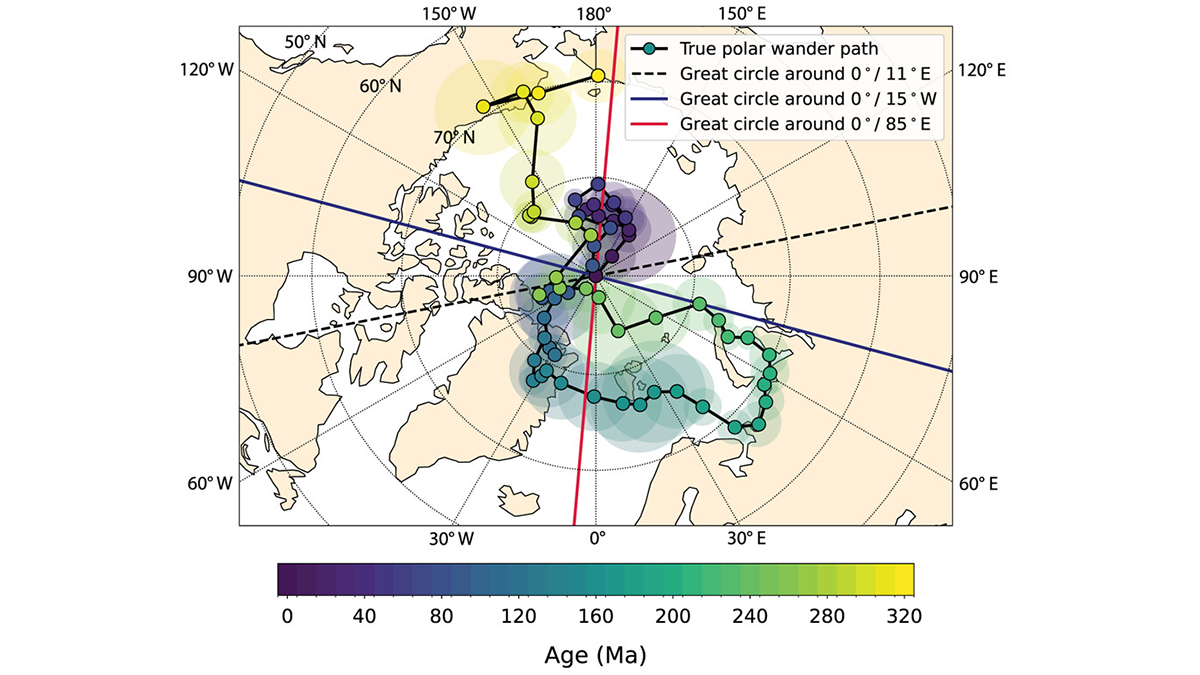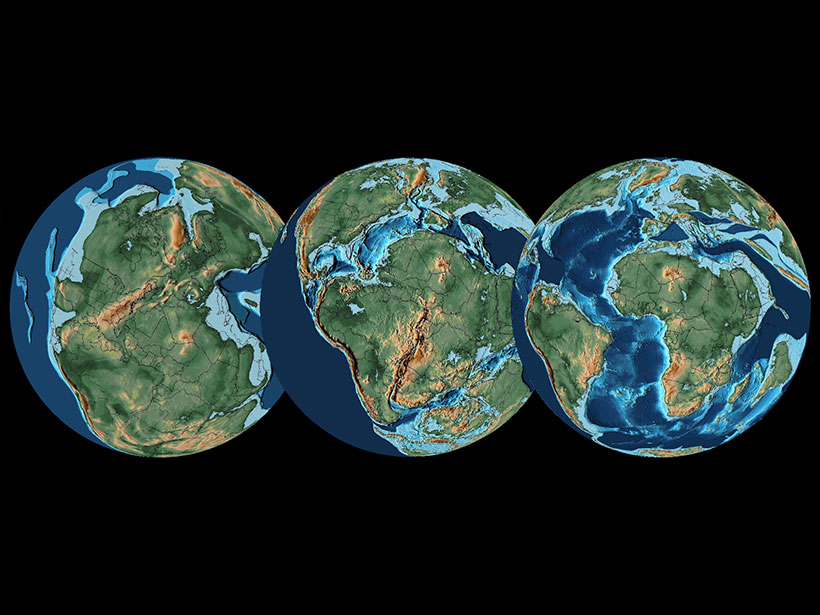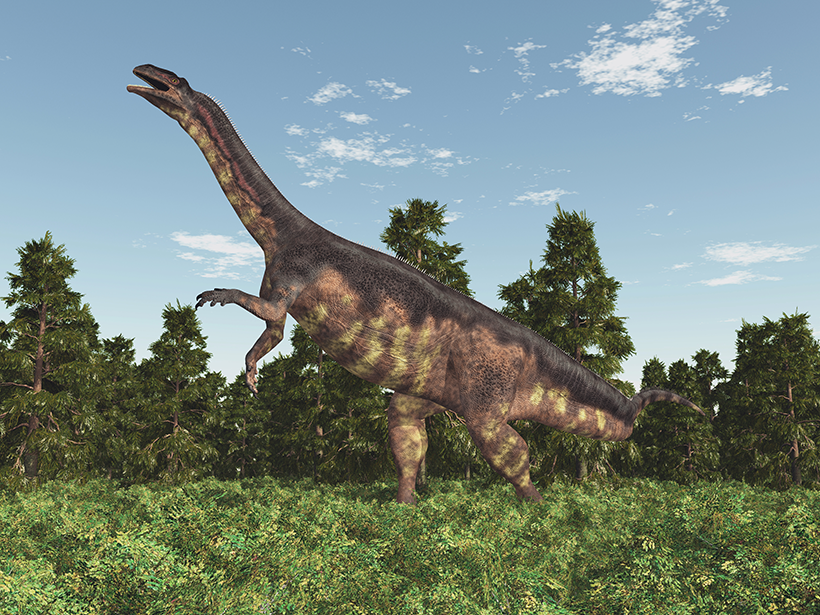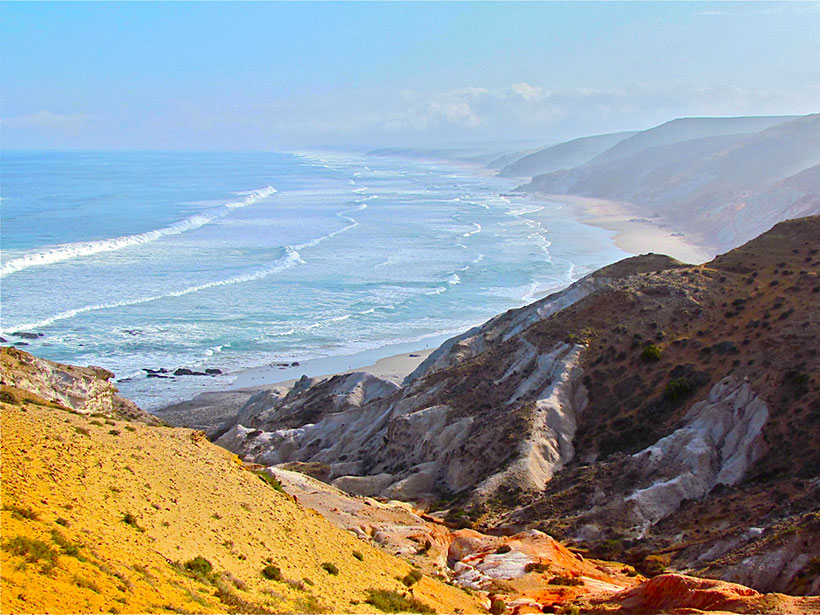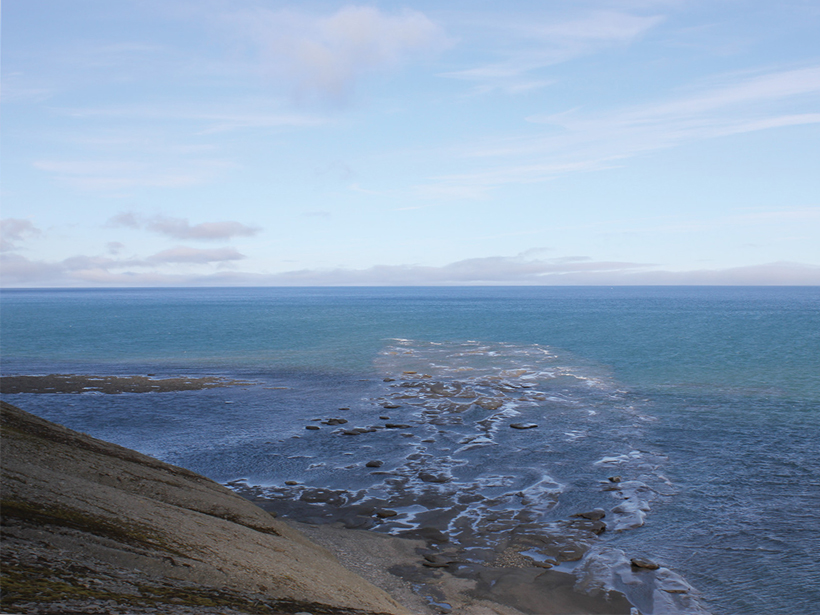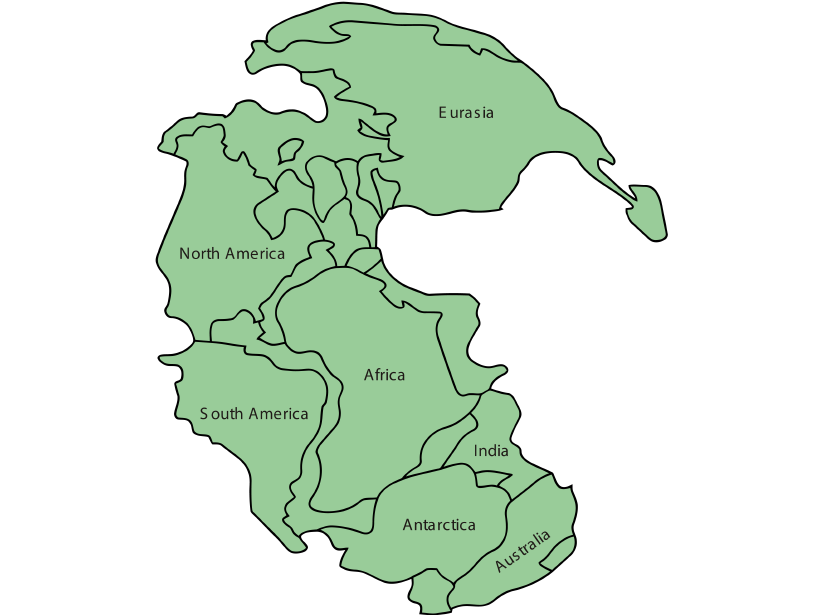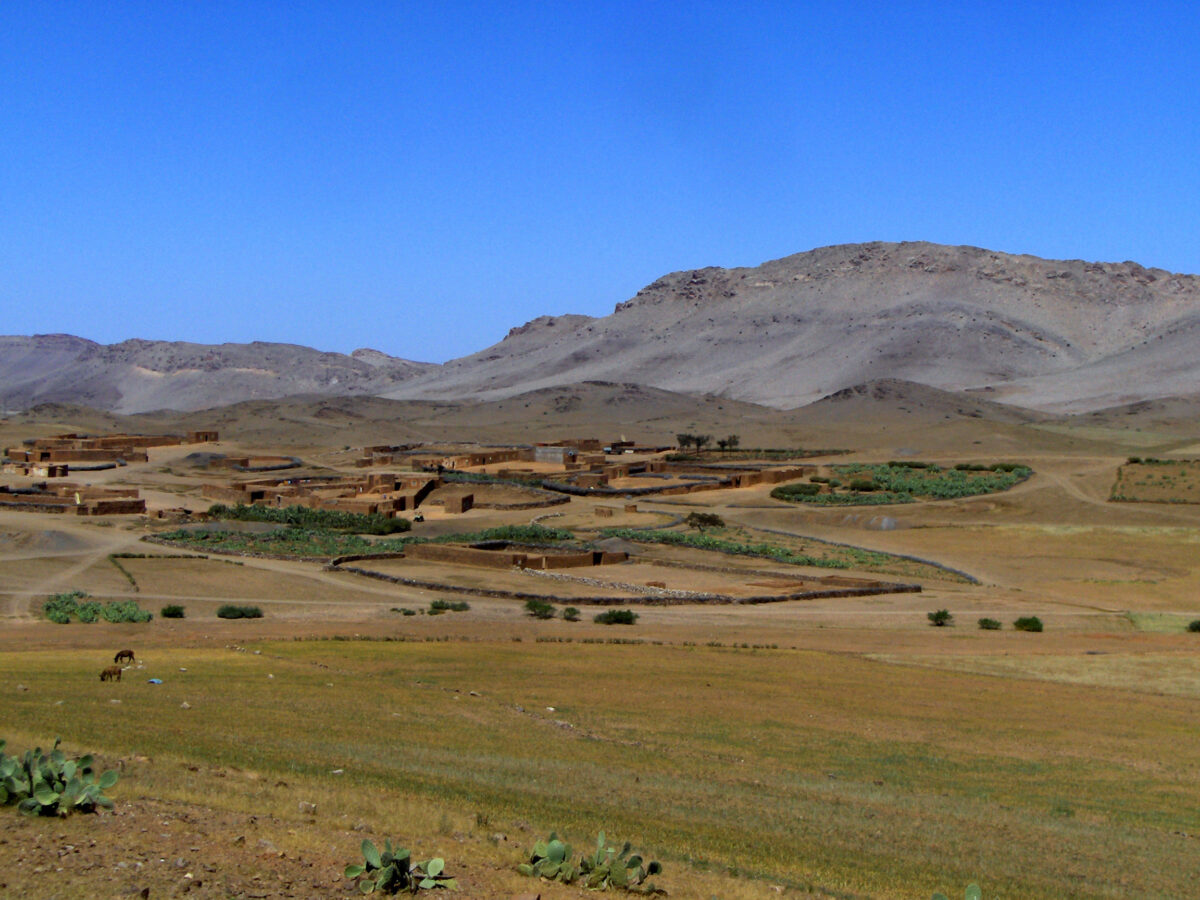A reanalysis of paleomagnetic poles provides tighter bounds on the style and rate of motions of our whole planet with respect to its rotation axis.
Pangea
Future Supercontinent Will Be Inhospitable for Mammals
Pangea returns in 250 million years, and it’s not looking good for us.
Simulating 195 Million Years of Global Climate in the Mesozoic
An ensemble of climate simulations identifies factors that drove long-term trends of a prehistoric greenhouse climate.
A Dip in Atmospheric Carbon May Have Facilitated Dinosaur Dispersal
Herbivorous dinosaurs migrated north across Pangea beginning about 214 million years ago, coincident with a downturn in atmospheric carbon dioxide levels.
A Little-Known Mass Extinction and the “Dawn of the Modern World”
Volcanic eruptions in what is now western Canada may have triggered a million years of rain and a mass extinction that launched the reign of the dinosaurs.
Ancient Sea Levels in South Africa May Offer Modern Analogues
Largely spared from disruptive tectonic activity, the South African coastline offers a natural setting to study sea levels from when Earth’s atmospheric carbon dioxide last reached today’s levels.
Ancient Precipitation Reveals Clues About Mountains and Climate
By studying the chemical signatures of 300-million-year-old precipitation, researchers find evidence that the supercontinent Pangea contained peaks as tall as the European Alps.
Largest Delta Plain in Earth’s History Discovered in Arctic
If this Triassic period delta existed today, its footprint would equal about 1% of all land on Earth.
Paleomagnetic Data Hint at Link from Earth’s Core to Continents
Earth’s magnetic field waxes and wanes as supercontinents form and break up, suggests a new study postulating a direct connection between our planet’s crust and its core.
Mountain Ranges Hold New Clues to Pangaea’s Formation
A new tectonic history of the Allegeny-Variscan range.

